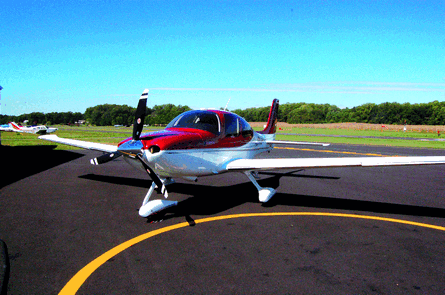The US Federal Aviation Administration has issued an immediate airworthiness directive that barred Cirrus SR22s from flight into known icing from 19 December, pending an inspection and potential rework of portions of the aircraft's TKS anti-icing system.
The FAA approved the four-seat low-wing aircraft for flight into known icing in January 2009. About 75 aircraft equipped to fly into known icing have been delivered since then and the European Aviation Safety Agency approved the feature for European-registered SR22s in early December.
Cirrus says it discovered the issue during a recent quality assurance inspection at its Duluth manufacturing plant, finding that some compression fittings on the anti-ice fluid distribution lines may have been improperly installed. Changes have already been made to the production line as of early November.
The airframer offers flight into known icing as a $24,500 upgrade to the basic SR22.
 |
|---|
© John Croft/Flightglobal |
If the lines separate in flight, the system could leak its glycol-based TKS fluid, leaving the aircraft with potentially no anti-icing protection on wing, windshield, propeller and horizontal and vertical stabiliser leading edges. With no ice protection, the FAA says ice could build on the airplane "and degrade the handling qualities and performance".
The option includes a second 15 litre (4USgal) TKS reservoir in the right wing, longer titanium leading edge cuffs chord-wise with more holes, a cuff for the vertical stab, back-up pump and additional stall protection monitoring.
Cirrus on 9 November issued a mandatory service bulletin to owners detailing the problem as well as instructions for inspecting and correcting improperly crimped connections. The company asked owners to perform the inspection, which takes about 10h, at the next scheduled maintenance event or annual inspection event for the aircraft, or within 100 flight hours of the 9 November notification, whichever occurs first.
"Until the service bulletin is complied with, the operator is advised that flight into know icing conditions is prohibited," says the Cirrus service bulleting, a recommendation the FAA repeated in its AD.
"If the aircraft encounters icing conditions, immediately exit conditions by changing altitude, turning back, or if clear air is known to be immediately ahead, continue on course," says Cirrus. The FAA mirrored Cirrus's compliance dates in its AD.
Source: Flight International
















